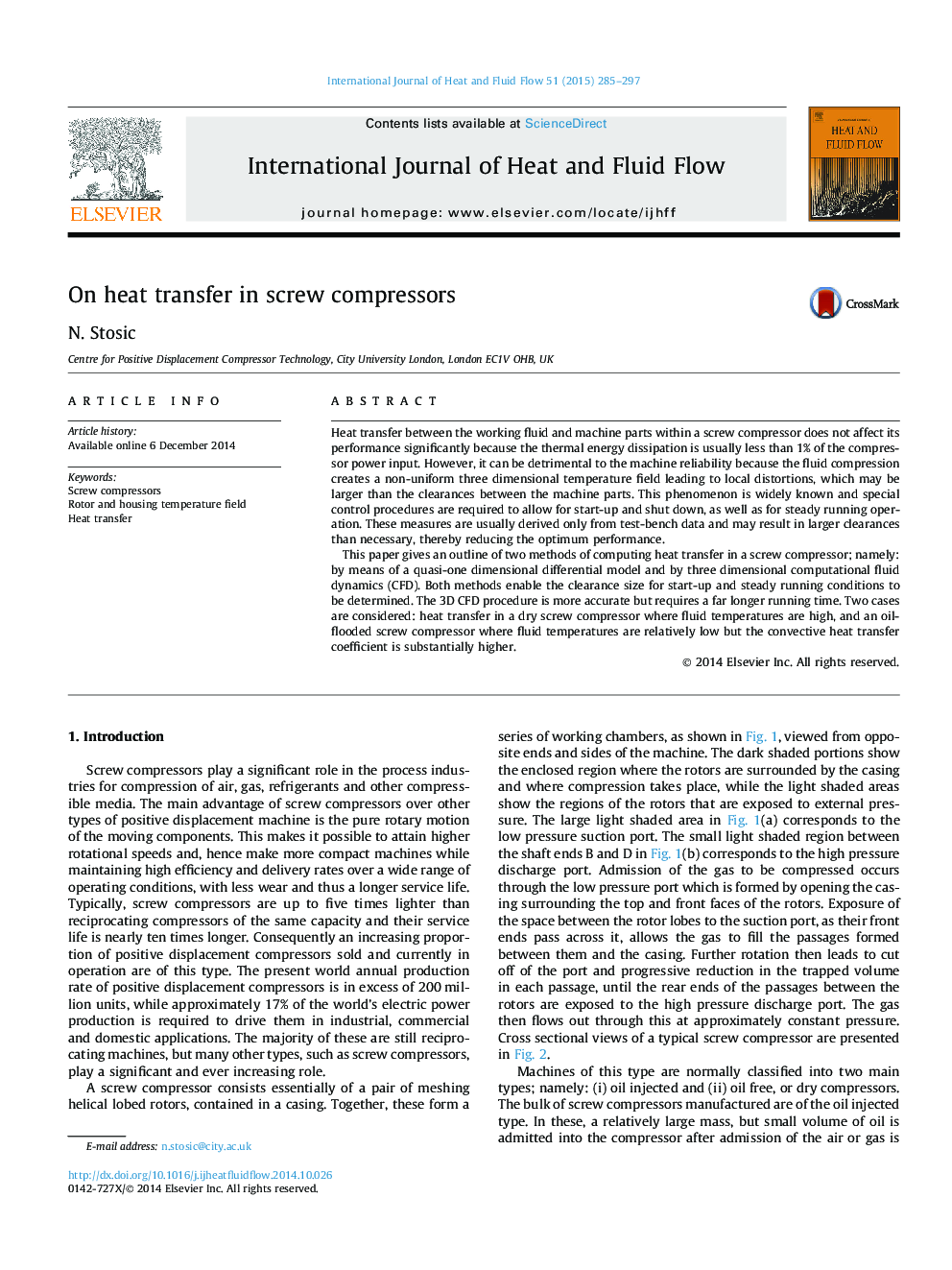| Article ID | Journal | Published Year | Pages | File Type |
|---|---|---|---|---|
| 655219 | International Journal of Heat and Fluid Flow | 2015 | 13 Pages |
•Heat transfer in a screw compressor does not much influence on its performance.•It may be detrimental to operational reliability because thermal deformation.•CFD is a suitable tool for estimation of thermal deformation due to heat transfer.•One-dimensional analysis can also provide useful information.
Heat transfer between the working fluid and machine parts within a screw compressor does not affect its performance significantly because the thermal energy dissipation is usually less than 1% of the compressor power input. However, it can be detrimental to the machine reliability because the fluid compression creates a non-uniform three dimensional temperature field leading to local distortions, which may be larger than the clearances between the machine parts. This phenomenon is widely known and special control procedures are required to allow for start-up and shut down, as well as for steady running operation. These measures are usually derived only from test-bench data and may result in larger clearances than necessary, thereby reducing the optimum performance.This paper gives an outline of two methods of computing heat transfer in a screw compressor; namely: by means of a quasi-one dimensional differential model and by three dimensional computational fluid dynamics (CFD). Both methods enable the clearance size for start-up and steady running conditions to be determined. The 3D CFD procedure is more accurate but requires a far longer running time. Two cases are considered: heat transfer in a dry screw compressor where fluid temperatures are high, and an oil-flooded screw compressor where fluid temperatures are relatively low but the convective heat transfer coefficient is substantially higher.
